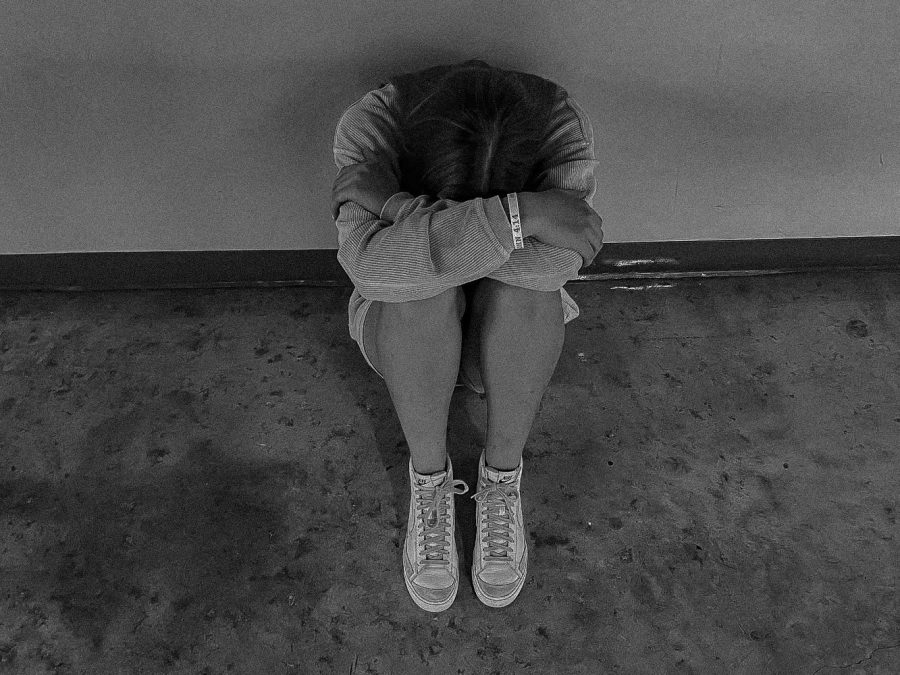Mental Health: By the Numbers
Students all over the world experience mental health issues and incorporating ways to cope with them is important in day to day life.
One in five adolescents will likely face a significant mental illness during their years in middle and high school according to the National Association of Secondary School Principals. Given that there were approximately 56.6 million students in the U.S. in 2019, this equates to more than 14 million students currently struggling with mental health.
 ChargerInk. conducted a poll in November 2021 designed to gauge the mental health status of students on this campus. 55 percent of those surveyed reported that they were struggling with their mental health, and 78.9 percent reported that they know someone who is struggling with their mental health. Of those surveyed, 71 percent said they turned to their friends for help regarding mental health issues, while only 59.7 percent said they turned to their families for aid. This may be because students feel more comfortable confiding in their friends than families, which highlights another difficulty in receiving help for mental illnesses: more often than not, friends may not be able to adequately provide the help needed, although it may be nice to talk to them.
ChargerInk. conducted a poll in November 2021 designed to gauge the mental health status of students on this campus. 55 percent of those surveyed reported that they were struggling with their mental health, and 78.9 percent reported that they know someone who is struggling with their mental health. Of those surveyed, 71 percent said they turned to their friends for help regarding mental health issues, while only 59.7 percent said they turned to their families for aid. This may be because students feel more comfortable confiding in their friends than families, which highlights another difficulty in receiving help for mental illnesses: more often than not, friends may not be able to adequately provide the help needed, although it may be nice to talk to them.
According to the National Institute of Mental Health (NIMH), secondary school students in the U.S. have experienced elevated levels of mental illness or disorders without treatment since the mid-20th century. This could be credited to a variety of factors, including but not limited to pressure to get into a good college or maintaining a social life.
A poll taken by Pew Research in 2019, shows this problem is rising quickly. Of 920 high school students surveyed, 70 percent said they struggled with their mental health. Why could this be? The poll reported that six in ten students said they felt massive pressure to get good grades, and three in ten students say they feel tense or nervous daily.
The United Nations Children’s Fund (UNICEF) reports that in 2020, at the height of the pandemic, of 8,440 adolescents surveyed, half said they feel less motivated to enjoy activities. 43 percent of young women and 31 percent of men reported feeling largely pessimistic about their futures. 3 in 4 adolescents said they thought they needed to seek help, but only 2 in 5 did for fear of being a burden on those they loved. Experts say that quarantine requirements of prolonged isolation are the leading cause.
Problems with mental health date back to human origin, yet there is still a stigma surrounding mental health, particularly in high schoolers. Students in middle and high school often don’t admit that they experience mental illness, or even symptoms — such as anxiety or depression — for fear of ostracization that can prevent them from seeking help.
ChargerInk. would like to encourage students to reach out to those in the community who may be going through a dark time. For anyone who may need help, the resources below are available.
Substance Abuse and Mental Health Services Services Administration (SAMHSA)
Website: https://www.samhsa.gov/find-help/national-helpline
Hotline: 1-800-662-HELP (4357)
Suicide Prevention Lifeline
Website: https://suicidepreventionlifeline.org/
Hotline: 1-800-273-TALK (8265)
For any problems someone may be struggling with:
Send HOME to 741741 to text with a Crisis Counselor

Amelie is ChargerInk.'s Editor-in-Chief. Amelie is a senior here at Champion, and this is her third year with the newspaper. She absolutely loves writing,...






